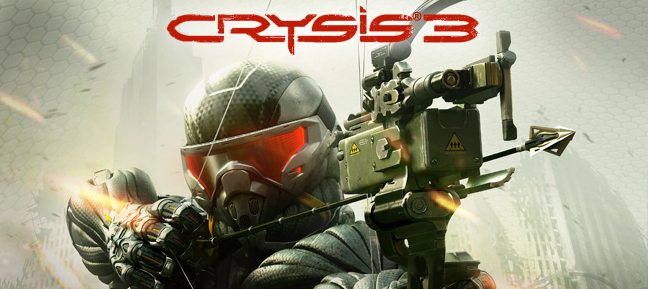Crysis 3 Tweak Guide
Author: Koroush Ghazi
Last Modified: March 2013

Introduction
Crysis 3 sees the return of Major Laurence "Prophet" Barnes to New York circa 2047, almost a quarter of a century after the events in Crysis 2. Stepping into Prophet's Nanosuit, you take on the role of battling the forces of CELL Corporation through a range of decaying urban environments overgrown with vegetation, using various high-tech weapons, including the new Predator Bow.
Since the first game in the series spawned the "Can it run Crysis?" meme, it's no surprise to see that Crysis 3 lives up to the series' reputation for advanced graphical prowess. Crysis 3 not only supports DirectX 11 right out of the box, it requires it: if your GPU and OS aren't DX11-capable, you won't be able to play the game. The latest iteration of Crytek's CryEngine, used to power Crysis 3, packs almost every form of eye candy possible in a modern PC game, and as a result, if you turn up the settings, the game will punish even the mightiest of systems.
The aim of this guide is to allow you to better understand and best utilize all of the configuration options available in Crysis 3, as well as giving you a range of advanced tweaks.
Before proceeding further, make sure you meet the game's minimum requirements as provided below, with the recommended requirements provided in brackets:
What follows are full descriptions for all of the settings available in the various options menus. Screenshot comparisons are provided where relevant to highlight the impact on image quality of changing these settings. Performance information is also provided for every setting, although the precise impact on your particular system depends on your specific hardware combination, and your other game and system-wide settings. The aim here is to give you enough information so that you can make an informed choice as to the settings you can enable or disable to obtain a balance of visual quality and performance acceptable to you.
General System Optimization
Almost as important as any in-game setting is the way your Windows installation is configured. A great many problems and performance issues, especially stuttering, crashes and slowdowns, can be traced directly to sub-optimal settings in Windows, and out-of-date or badly configured drivers. Go through the Stable Gaming Guide to get your PC in the best shape. At the very least, make sure to update your Graphics Drivers to the latest available version, as these contain significant performance optimizations for Crysis 3.
Performance Measurement
To successfully conduct any tweaking, you will need a way of objectively measuring your performance in Frames Per Second (FPS). The easiest way to do this is to use the free FRAPS utility. Download, install and launch FRAPS before starting up the game. You will now see a yellow FPS counter displayed in the corner of your screen. Pay attention to your FPS during the game, particularly during graphically intense scenes, such as during combat, or in large open areas. If it dips to a very low level at any point, then this is a good indication that you need to adjust various settings to raise your minimum framerate to around 25-30 FPS.
